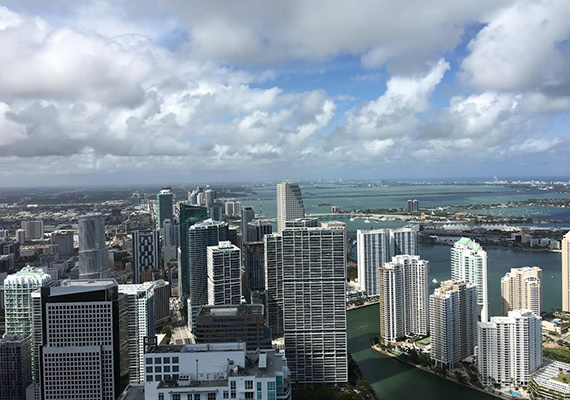Trending
South Florida’s office markets cool during the first quarter of 2017: reports

Class A office rents in South Florida are stabilizing following a period of rapid growth and market uncertainty, according to a new report.
Asking rents for Class A space in the central business districts fell slightly in Miami-Dade and Broward counties, and increased in Palm Beach, a new batch of Colliers International South Florida reports show.
“What’s enabled pricing to be pushed so dramatically has been a lack of supply,” Colliers’ Ken Krasnow said. Over the two years, new supply will determine whether rent growth continues.
In Miami’s urban core, “what you’re starting to see is a little bit of elasticity on rents,” he said. In Miami’s urban core, annual Class A office rents during the first quarter of this year were at $46 per square foot, down 1.3 percent from the fourth quarter of last year. Suburban Class A rents increased slightly by 0.3 percent to $37.35 per square foot.
Coral Gables was a big part of that, Krasnow said. University of St. Augustine signed a lease for 53,400 square feet in the Douglas Entrance office park in Coral Gables, marking the biggest deal in the first quarter. Raymond James and Cosentino North America also inked some of the largest leases in Miami-Dade, both in the Gables.
“A lot of people were writing the suburbs off for dead a couple of years ago.” he said. “We’re starting to see some companies look at the suburban options.”
The asking price for all office space in Miami-Dade increased to $33.76 per square foot from the fourth quarter of last year to the first quarter. Overall, the vacancy rate in Miami-Dade declined by 30 basis points on a quarterly basis, which Colliers attributes to the absorption of Class B and C space.
Krasnow said some firms outpriced by rents in Miami and Fort Lauderdale’s urban cores are looking to stay – but in Class B buildings. Instead of leasing bigger spaces, they are also using alternative workspaces like Regus, WeWork and other co-working options. “Rents are obviously at a level that’s giving more companies reasons to see alternatives,” Krasnow said.
Rents in downtown Fort Lauderdale have increased by 21 percent over the past two years, according to the report. From the fourth quarter of 2016 to last quarter, Broward’s overall office asking rent increased by 0.5 percent to $26.66 per square foot. Asking rents for Class A space fell by 3.1 percent to $31.11 per square foot during the same period.
Tenants fleeing the urban core are choosing suburban areas like Sawgrass, Sunrise, Plantation and Weston. Wells Fargo, Huizenga Holdings and Brinkley Morgan left downtown Fort Lauderdale, according to the report. American Express opened its 400,000-square-foot headquarters in the Sawgrass Park submarket, which led to a high absorption rate there.
Palm Beach County’s office market has, for the most part, remained consistent. Krasnow said some buildings surrounding the core are seeing more activity. The vacancy rate in Palm Beach has been at 12.2 percent for the past three quarters, according to the report. Class A office rent increased 2 percent from the fourth quarter of 2016 to $33.50, and overall asking rent increased 0.5 percent to $28.16 per square foot.
Investment sales have slowed in recent months in South Florida, especially in Miami. Krasnow expects some properties will hit the market over the next few months in Fort Lauderdale.
“There was a lot of election noise, there was a lot of uncertainty over the past six to eight months,” he said, adding that the expected deregulation of Wall Street under a Trump presidency would be good for banks, hedge funds and other financial services firms that lease space in all three counties.




